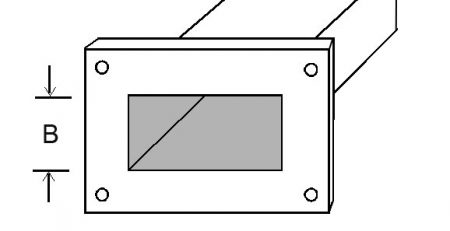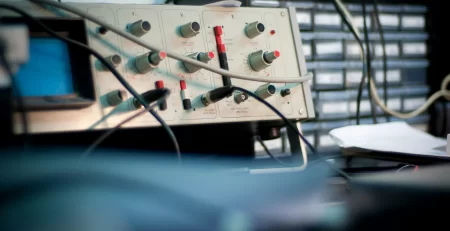Power Amplifiers Demystified: Your Ultimate Guide
Power amplifiers, the backbone of various applications, play a pivotal role in transforming low-power signals into robust audio outputs. The guide aims to unravel the complexities surrounding power amplifiers and shed light on their significance across industries. As we delve deeper, understanding the nuances of voltage and current becomes paramount for optimizing amplifier performance.
Power Amplifier Basics
When exploring the realm of amplifiers, understanding the basic components and their functionality is essential. Let’s delve into the fundamental aspects that define a power amplifier.
What is a Power Amplifier?
Definition and Function
Power amplifiers serve as an indispensable component in various electronic devices, elevating voltage levels to drive audio outputs with enhanced clarity and strength. By harnessing the principles of semiconductors work, these amplifiers play a pivotal role in transforming low-power signals into robust audio outputs.
Key Components
The core components of a power amplifier include transistors or vacuum tubes, which act as the primary amplifying devices. These components are meticulously designed to handle large currents efficiently, ensuring optimal performance. Additionally, capacitors and resistors are integrated into the circuit to regulate current flow and maintain signal integrity.
Power amplifier is widely used in both life and industry. Ocean Microwave is a specialist in the design and development of high performance antennas, developing and manufacturing high efficiency power amplifiers. We have outstanding advantages in designing products with high power, high integration, high difficulty and special needs.
How Power Amplifiers Work
Amplifying Devices
At the heart of every power amplifier lies its amplifying devices, which modulate input signals to boost output power. Through intricate electronic processes, these devices amplify the incoming audio signals without compromising quality or introducing distortions. This process aligns with the critical aspect of maintaining amplifier linearity to prevent signal degradation.
Signal Conversion
As the input signal traverses through the amplifier circuitry, it undergoes a transformation that culminates in a powerful output signal. The conversion process involves precise manipulation of electrical currents and voltages, ensuring that the amplified signal faithfully reproduces the original audio content with heightened intensity and fidelity.
By comprehending these foundational concepts of power amplifiers, individuals can gain a deeper insight into their operational mechanisms and significance in modern electronics.
Power Amplifier Applications
Home Theater Systems
When setting up a home theater system, it is crucial to understand the role of a power amplifier in enhancing your audio experience. Let’s explore how you can optimize your setup by connecting a power amplifier and leveraging its capabilities.
Connecting a Power Amplifier
- Begin by identifying the audio output sources from your devices, such as TVs or media players.
- Connect the audio output cables from these devices to the input ports of your power amplifier.
- Ensure that the connections are secure to prevent any signal loss or interference.
- Adjust the volume levels on both your source devices and the power amplifier to achieve balanced audio output.
- By following these steps, you can seamlessly integrate a power amplifier into your home theater setup for immersive sound quality.
Role in Home Theater Receivers
- Home theater receivers serve as central hubs for audio and video distribution in your entertainment system.
- A power amplifier complements the receiver by boosting the audio signals to drive speakers with optimal power.
- The combined functionality of a receiver and power amplifier ensures that you experience cinematic sound quality at home.
- Leveraging a power amplifier within your home theater setup enhances bass performance and overall audio clarity, elevating your viewing experience.
Professional Audio Systems
In professional settings like concerts and events, power amplifiers play a pivotal role in delivering high-quality sound reinforcement to large audiences. Understanding their significance in professional audio systems sheds light on their impact on live performances.
Use in Concerts and Events
- Concert venues utilize powerful amplifiers to drive large speaker systems and deliver crystal-clear sound across expansive spaces.
- The efficiency of these amplifiers ensures that every note and lyric is projected with precision, captivating audiences throughout the event.
- By incorporating robust amplification solutions, event organizers can create memorable experiences for attendees through exceptional sound quality.
Choosing the Right Power Amplifier
Factors to Consider
When selecting a power amplifier, understanding the power requirements is crucial to ensure optimal performance. Evaluating the power needs of your audio system enables you to choose an amplifier that can deliver the necessary output without distortion or strain.
In addition to power considerations, compatibility with other equipment plays a pivotal role in creating a seamless audio setup. Ensuring that your amplifier integrates harmoniously with existing devices enhances overall system functionality and user experience.
- Verify that the input and output connections of your amplifier align with those of your audio sources and speakers for effortless connectivity.
- Check for compatibility with signal processing equipment or equalizers to maintain signal integrity throughout the audio chain.
- Prioritize amplifiers equipped with protection circuits to safeguard against electrical faults and ensure long-term reliability.
- By selecting a compatible amplifier, you can streamline your audio setup and enjoy uninterrupted listening sessions without technical hitches.
Power Amplifier Channel Configurations
Mono, Stereo, and Multi-Channel
- Mono: Ideal for single-channel applications, mono amplifiers deliver focused sound reinforcement suitable for scenarios like public address systems or studio monitoring setups.
- Stereo: Widely used in home entertainment systems, stereo amplifiers enhance spatial audio reproduction by driving two distinct channels (left and right) independently.
- Multi-Channel: Suited for immersive surround sound experiences, multi-channel amplifiers distribute audio signals across multiple channels (e.g., 5.1 or 7.1 configurations) for cinematic realism.
Applications of Each Configuration
- Mono amplifiers excel in scenarios requiring singular sound projection without spatial separation, such as vocal monitoring or background music distribution.
- Stereo amplifiers elevate music listening experiences by reproducing stereo recordings with enhanced clarity and channel separation for an immersive sonic environment.
- Multi-channel configurations cater to home theater enthusiasts seeking enveloping soundscapes during movie playback or gaming sessions through synchronized channel distribution.
As one of the leading manufacturers of power amplifiers and electronics, Ocean Microwave has cooperated extensively with domestic and foreign customers including the Fortune 500 companies, universities and research institutions with its outstanding innovation capabilities. With decades of accumulation and experienced team, Ocean Microwave has become the most important distributor of many global companies. In the face of the market, we will actively explore and continue to search for, use science and technology as strength, provide high-quality services for customer service, and help our customers become more powerful.
In summary, understanding the fundamental components and operational mechanisms of power amplifiers is essential for optimizing audio performance. Selecting the right amplifier tailored to your speaker’s impedance rating ensures optimal sound quality and system longevity. Prioritizing reputable brands known for producing reliable amplifiers enhances overall audio experience. Efficiently utilizing amplifier channels streamlines setup complexity and ensures smooth system operation. Researching and comparing specifications between amplifiers and passive PA speaker’s guarantees compatibility and seamless integration.










